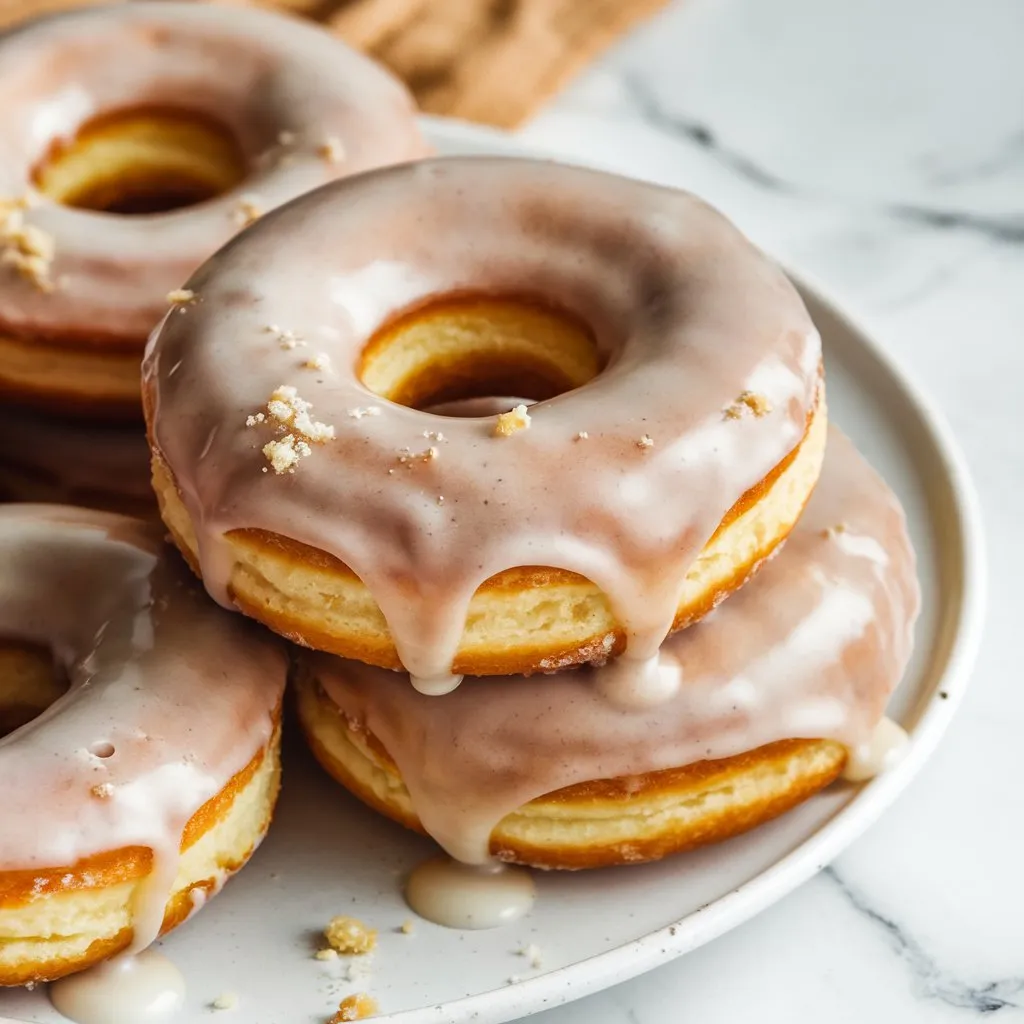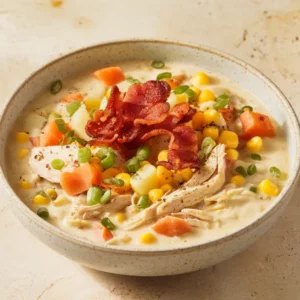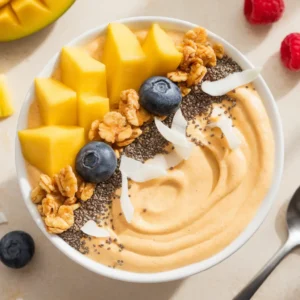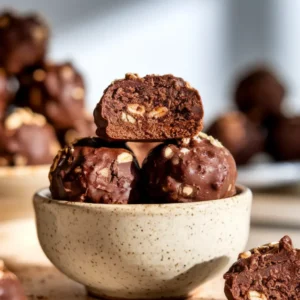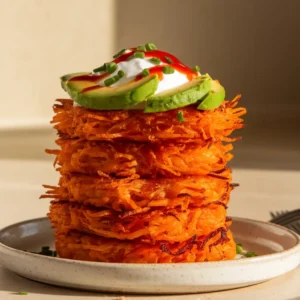If you think vegan donuts have to be dense or overly oily, this recipe will change your mind completely. These homemade beauties are genuinely light, fluffy, and irresistibly sweet—everything a great donut should be. Whether you’re plant-based by choice or simply out of eggs and dairy, this straightforward recipe delivers bakery-quality results that disappear as fast as you can make them.
The key to success lies in creating a tangy “buttermilk” effect using plant milk and apple cider vinegar, combined with the perfect balance of wet to dry ingredients. This technique produces that coveted tender crumb without any animal products. These vegan donuts are perfect for weekend breakfast treats, impromptu gatherings, or anytime you want to show that plant-based baking can deliver exceptional results every time.
Why You’ll Love These Vegan Donuts
❧ 30-minute total time: From mixing bowl to glazed perfection in just half an hour, these donuts are perfect for a quick treat that feels special.
❧ Pantry-friendly ingredients: No need for specialty vegan products. You probably already have everything on hand, making this an easy, accessible recipe for any home baker.
❧ Bakery-quality texture: These donuts are light, airy, and never dense or gummy, giving you that professional bakery feel without any fuss.
❧ Customizable flavors: Whether you prefer chocolate, vanilla, or cinnamon, these donuts adapt easily. Add your favorite flavors or toppings for a fun twist.
❧ Freezer-friendly: Make a batch ahead of time and glaze when ready to serve. Perfect for meal prep, parties, or last-minute cravings.
❧ Kid-approved: Even non-vegans won’t guess these donuts are dairy and egg-free, making them a hit with the whole family.
What You’ll Need!
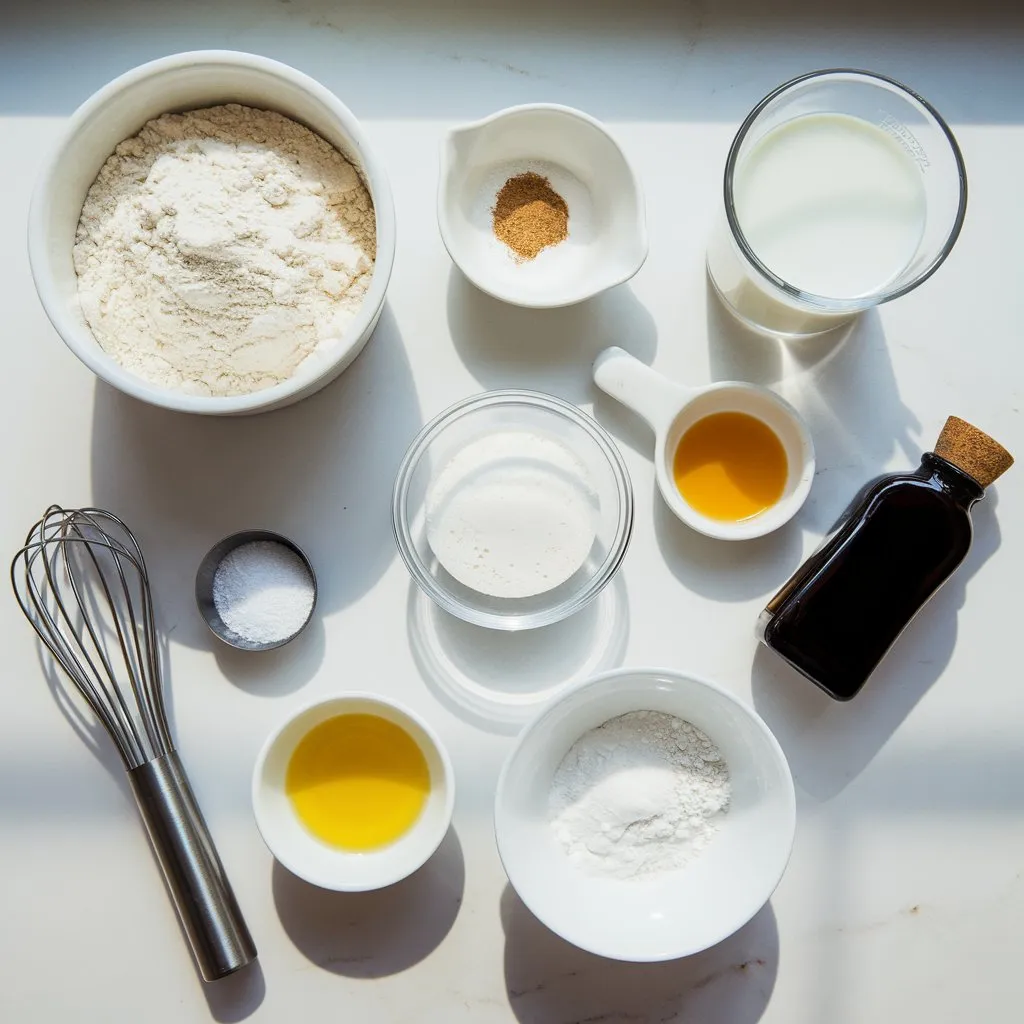
⋄ For the Donuts:
• 1.2 cups all-purpose flour. spoon and level for accuracy; cake flour works too for extra tenderness
• ¾ cup granulated sugar. creates moisture and feeds the yeast-like action
• 2 teaspoons baking powder. use fresh for maximum lift
• 1 teaspoon salt. balances sweetness and strengthens gluten structure
• ½ teaspoon ground nutmeg. the classic donut spice that makes all the difference
• ¾ cup unsweetened plant milk. oat or soy work best; avoid coconut milk as it’s too thick
• ⅓ cup neutral oil. vegetable or canola; avoid olive oil’s strong flavor
• 2 tablespoons apple cider vinegar. creates the “buttermilk” tang and helps with rising
• 2 teaspoons vanilla extract. use pure extract for best flavor
• 2 tablespoons aquafaba (chickpea liquid). acts as our egg replacer for binding
⋄ For the Glaze:
• 2 cups powdered sugar — sift if lumpy
• 3-4 tablespoons plant milk — add gradually for perfect consistency
• 1 teaspoon vanilla extract
• Pinch of salt
Storage tip: Keep leftover aquafaba refrigerated for up to one week—it’s perfect for other vegan baking projects.
How To Make Vegan Donuts Step-by-Step
❧ Preheat and prep your workspace.
Heat oven to 375°F and generously grease two standard donut pans with oil or vegan butter. Don’t skip the greasing—these will stick if you’re not thorough. Dust lightly with flour and tap out excess.
❧ Create your “buttermilk” mixture.
In a large measuring cup, whisk together plant milk, apple cider vinegar, and aquafaba. Let this sit for 5 minutes while you prepare the dry ingredients. You’ll see it start to curdle slightly—that’s exactly what we want for tender donuts.
❧ Mix the dry ingredients thoroughly.
In a large bowl, whisk the flour, sugar, baking powder, salt, and nutmeg until well combined. Make sure there are no lumps of baking powder, as they can cause uneven rising and bitter spots.
❧ Combine wet and dry ingredients carefully.
Add the oil and vanilla to your “buttermilk” mixture, then pour into the flour mixture. Fold together with a rubber spatula until just combined—you should still see a few flour streaks. Overmixing creates tough, dense vegan donuts.
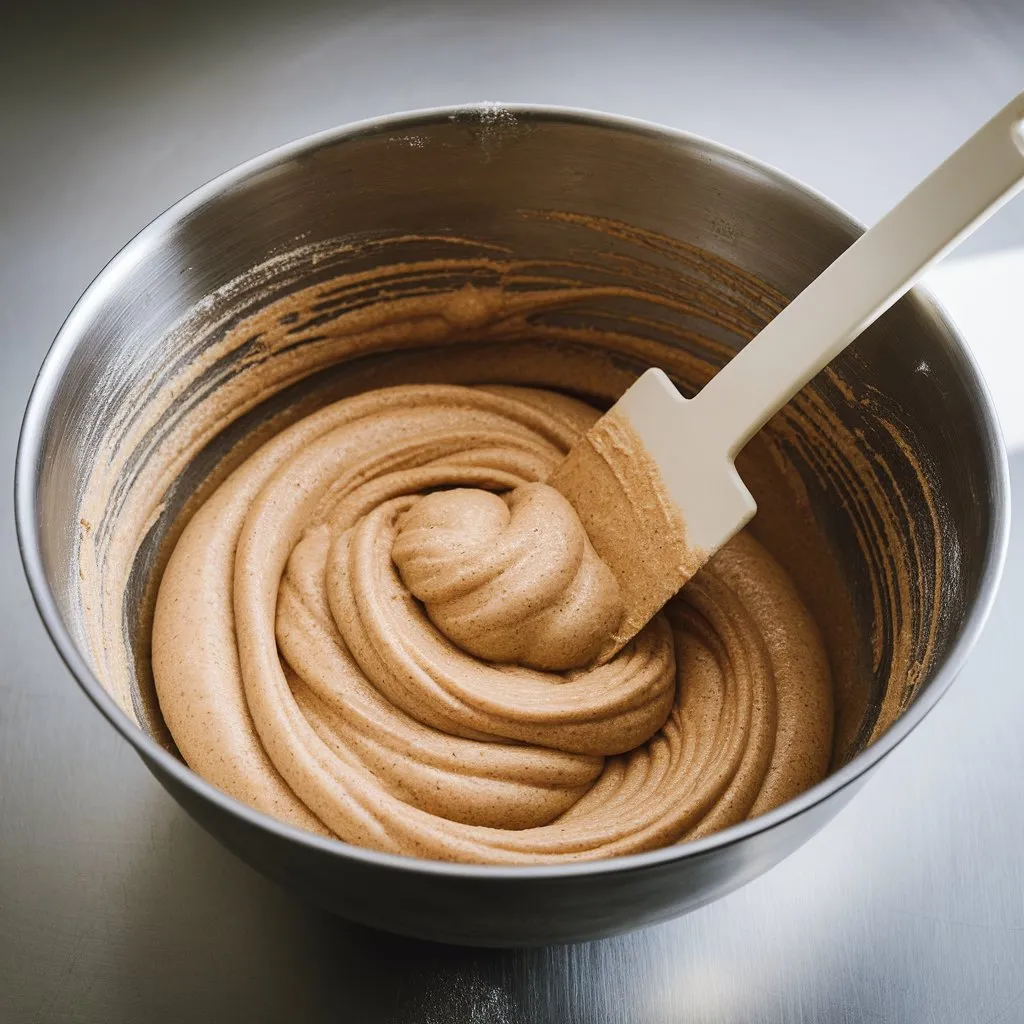
❧ Fill the donut molds strategically.
Using a piping bag or large zip-top bag with the corner cut off, pipe batter into donut molds, filling each about ⅔ full. This prevents overflow while ensuring full, round shapes. If you don’t have a piping bag, use two spoons, but work quickly as the baking powder is already activated.
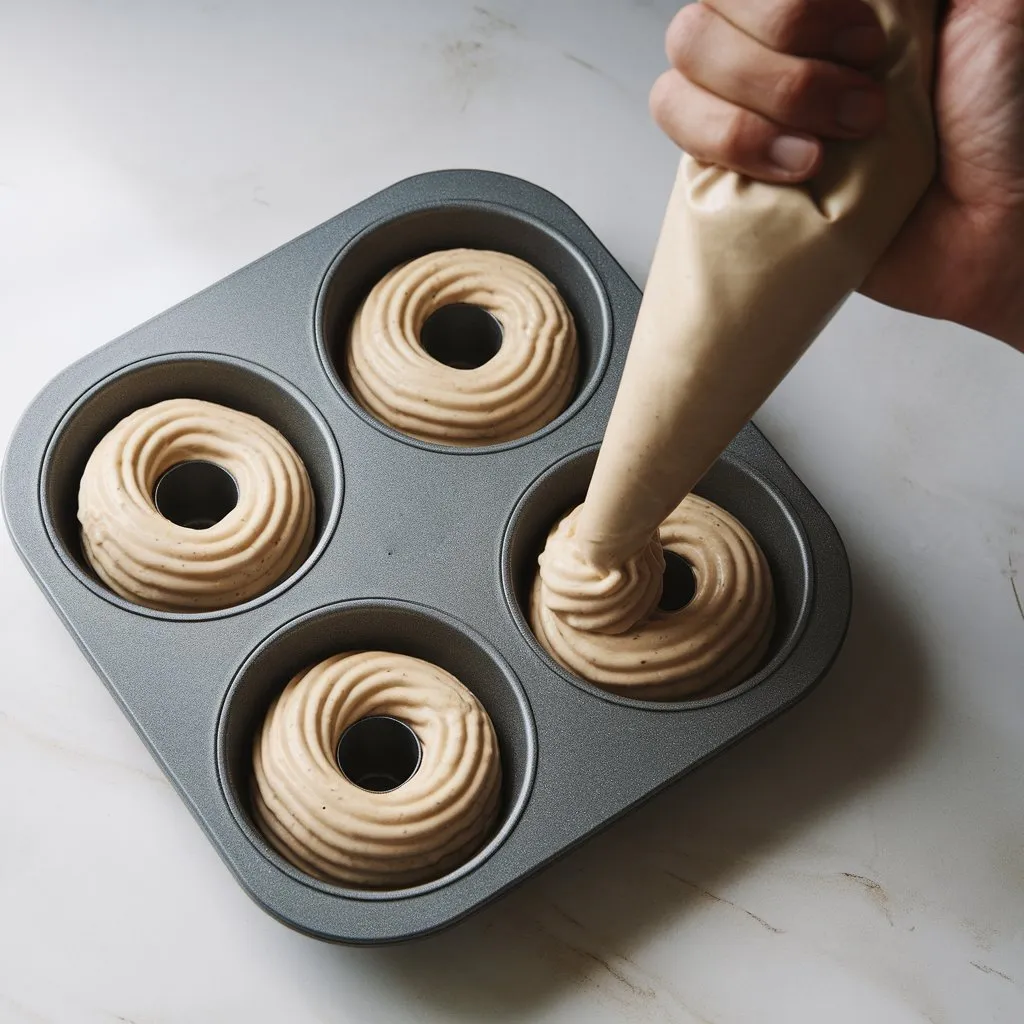
❧ Bake with precision.
Place the donuts in a preheated oven for 12 to 14 minutes. You’ll know they’re ready when the tops spring back when lightly touched and the edges are just starting to turn golden. Be careful not to overbake, vegan donuts can go from perfectly tender to dry very quickly.
❧ Cool before glazing.
Let the donuts cool in their pans for about 5 minutes, then gently turn them out onto a wire rack. It’s important that they are completely cool before you add the glaze. Glazing warm donuts will cause the topping to melt off, and nobody wants that!
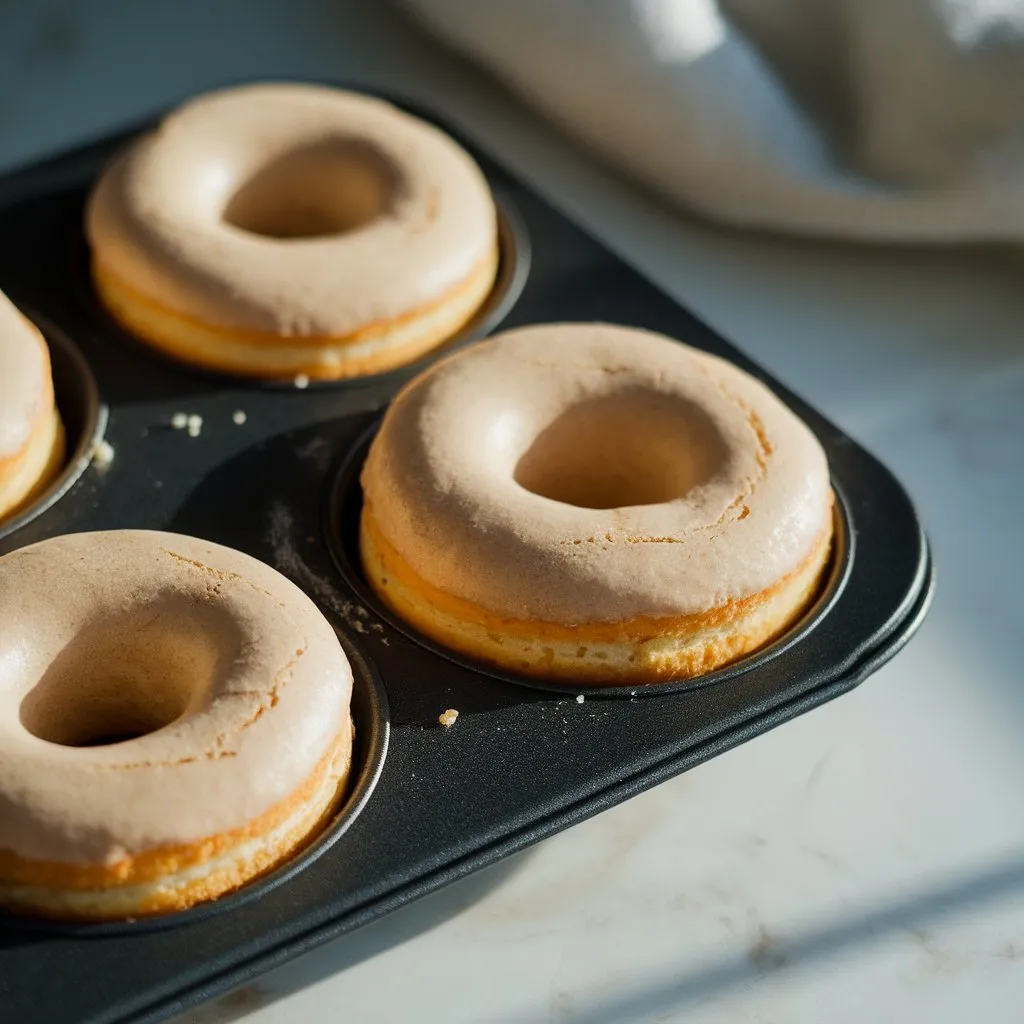
❧ Make the perfect glaze.
Whisk powdered sugar, 3 tablespoons plant milk, vanilla, and salt until smooth. The consistency should coat a spoon but still drip off easily. Add more plant milk one teaspoon at a time if too thick.
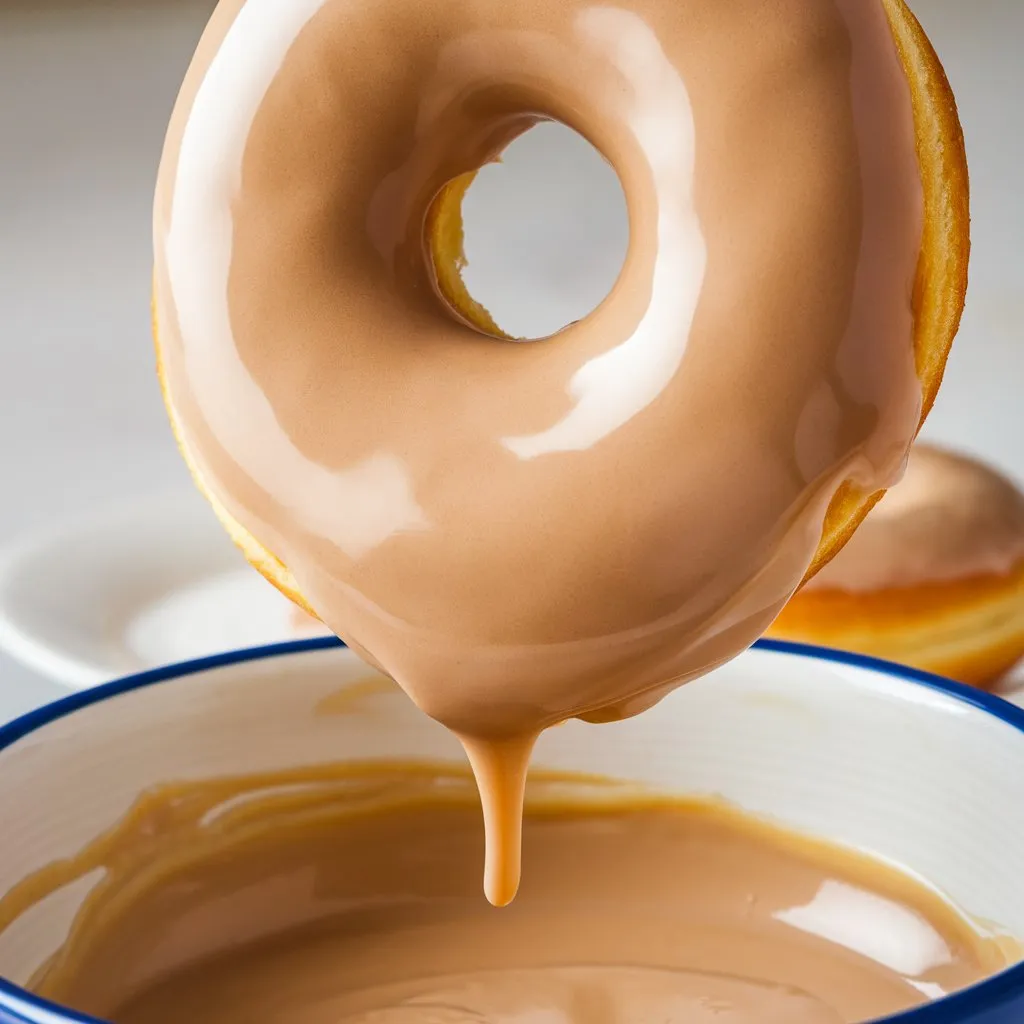
Pro Tips for Perfect Vegan Donuts
❀ Don’t skip the aquafaba. This recipe has been tested with flax eggs and commercial egg replacers, but aquafaba gives the best texture and rise. Make sure to save the liquid from any canned chickpeas you use, it’s magic in donut form.
❀ Room temperature ingredients work better. Cold plant milk can cause the oil to seize up and create lumpy batter. Let your ingredients sit out for 30 minutes before starting for a smooth, silky batter.
❀ Pipe, don’t pour. Using a piping bag gives you control over portioning and helps avoid air bubbles that can create lopsided donuts. It’s the secret to evenly shaped, professional-looking donuts.
❀ Test your glaze consistency on one donut first. Try dipping one donut first. You want the glaze thin enough for a smooth coating but thick enough that it doesn’t run off completely. This ensures a glossy, bakery-quality finish.
❀ Double-glaze for bakery style. For a thick, shiny finish, let the first coat set for 10 minutes, then dip again. This gives you that classic donut shop look and texture that everyone loves.
Things You’ll Probably Wonder While Baking These
❧ Can make these without aquafaba?
Yes, but the texture won’t be quite as light. Substitute with 2 tablespoons of ground flaxseed mixed with 6 tablespoons water, let sit for 15 minutes until gel-like.
❧ How do I store leftover vegan donuts?
Store unglazed donuts covered at room temperature for 2 days, or freeze for up to 3 months. Glaze just before serving for best appearance and texture.
❧ Can I bake these in a muffin tin instead?
Absolutely! Use a standard muffin tin and bake for 18-20 minutes. They won’t have the classic donut shape, but the flavor and texture remain the same.
❧ Why are my donuts dense?
This usually happens from overmixing the batter or using expired baking powder. Mix until just combined, and check your baking powder’s freshness by dropping a bit in hot water—it should fizz vigorously.
Nutrition Information
Each vegan donut contains approximately 185 calories, making them a reasonable treat when enjoyed in moderation. Unlike traditional donuts that rely heavily on butter and eggs, this plant-based version gets its richness from heart-healthy oils and plant milk, which means less saturated fat per serving.
The aquafaba (chickpea liquid) adds a small amount of plant protein and fiber, while the all-purpose flour provides energy-sustaining carbohydrates. Since these donuts are baked rather than fried, they contain significantly less oil than commercial varieties—about 2 teaspoons per donut compared to the deep-fried alternatives that can contain up to 2 tablespoons of oil each.
Per donut (without glaze): Approximately 185 calories, 6g fat, 30g carbohydrates, 1g fiber, 3g protein. The glaze adds roughly 80 calories and 20g carbohydrates per donut.
For a lighter version, you can reduce the sugar by ¼ cup and substitute half the all-purpose flour with whole wheat pastry flour. The texture will be slightly denser but still delicious, with added fiber and nutrients.
End of the Recipe, Start of a New Obsession
These vegan donuts prove that plant-based baking doesn’t mean compromising on taste or texture. The combination of tangy “buttermilk” and careful mixing technique creates donuts that are genuinely better than most bakery versions—and you know exactly what’s in them.
Once you master this base recipe, try my :
❀ Easy Cookie Cake Recipe – Soft, Chewy, and Ready in 30 Min
❀ Easy Chicken Alfredo Lasagna Recipe
Have you tried making vegan donuts before? I’d love to hear about your experience in the comments below! Did you stick to the classic glaze, or get creative with chocolate, sprinkles, or cinnamon sugar?
If you make this recipe, don’t forget to rate it so other bakers know it works. For easy reference later, save this recipe to Pinterest, this way you can come back anytime you want a quick, impressive treat. Seeing your homemade creations always makes my day, so happy baking!
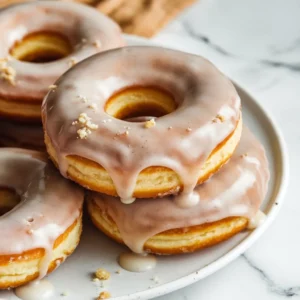
Fluffy Baked Vegan Donuts
Ingredients
- 1 cup unsweetened plant milk
- 1 tablespoon apple cider vinegar
- ¼ cup aquafaba liquid from canned chickpeas
- ⅓ cup neutral oil like canola or sunflower
- ¾ cup granulated sugar
- 2 teaspoons vanilla extract
- 2 cups all-purpose flour
- 2 teaspoons baking powder
- ½ teaspoon baking soda
- ½ teaspoon salt
- ¼ teaspoon ground nutmeg
Vanilla Glaze:
- 1 cup powdered sugar
- 1½ –2 tablespoons plant milk
- ½ teaspoon vanilla extract
Instructions
- Preheat oven to 350°F (175°C) and lightly grease a donut pan.
- Combine plant milk and vinegar; let sit for 5 minutes to curdle.
- Whisk in aquafaba, oil, sugar, and vanilla until smooth.
- In a separate bowl, mix flour, baking powder, baking soda, salt, and nutmeg.
- Fold wet and dry ingredients together just until combined.
- Spoon or pipe batter into the pan, filling each cavity two-thirds full.
- Bake 10–12 minutes until golden and springy.
- Cool slightly before dipping in glaze.
